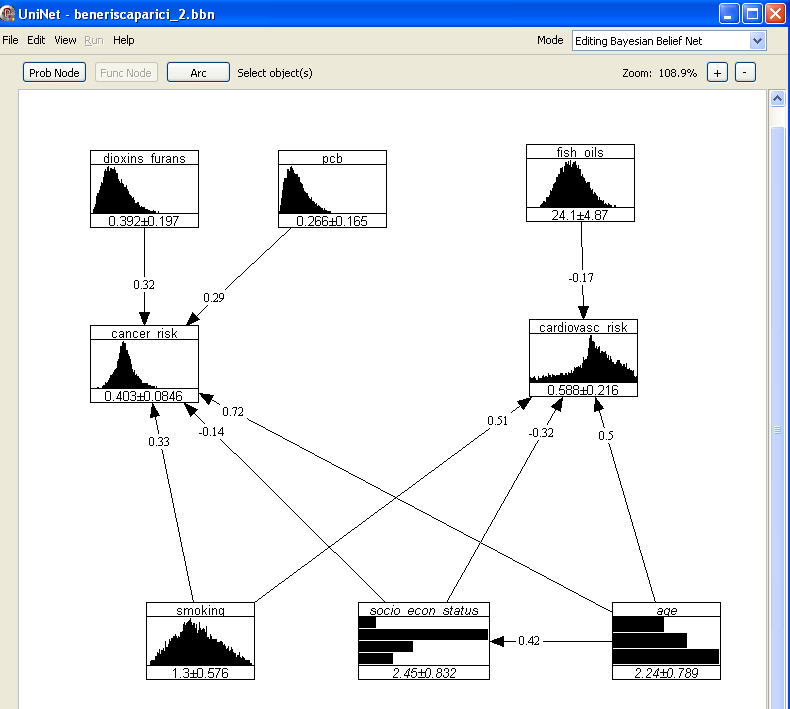Bayesian belief networks
This page is a encyclopedia article.
The page identifier is Op_en3793 |
|---|
| Moderator:Jouni (see all) |
|
|
| Upload data
|
Environmental health problems are usually complex causal chains that are not easily described, especially not in quantitative terms. However, there are tools available for these kinds of situations. New Bayesian probability methods enable this kind of integrated analysis of complicated situations to be made in a comparable way. A formal elicitation of expert judgement is a method of obtaining quantitative estimates in cases where data is sparse.
Bayesian belief networks are used in probability theory to describe complex causal structures that contain uncertain variables. Therefore they are very useful in describing real-life situations where the aim is to estimate and predict how certain actions affect outcomes of interest through a causal chain. Assessment of the benefits and risks posed to a consumer via food as a result of the implementation of various policies is a good example of its possible application. Other fields where this methodology has been used include medical treatment of severe infections, functional safety of programmable electronic systems, and cellular network diagnostics. There exists both commercial software for utilisation of Bayesian belief networks, and also open-source programs such as Bayes Network Toolbox for Matlab. Scientific interest in these methods has been significant especially in statistics and computer science. However, they have not yet been widely used in environmental health risk analysis.
| Tools for Bayesian belief networks | Comment |
|---|---|
| Bayes Network Toolbox (BNT) | Freely available, but requires Matlab |
| Uninet | An advanced software for research purposes developed in the Delft Technical University. |
| Hugin | A commercial software for discrete BBNs |
| Netica | A commercial software for discrete BBNs |
| B-Cource | A web-based software for creating BBNs directly from existing data |
Bayesian belief networks utilise graph theory using nodes as variables and edges or arcs as influences or associations between the variables. This is an effective way of describing the system because, on the one hand, the resulting graph is demonstrative and understandable and, on the other hand, the existence or lack of an arc between two nodes explicitly indicates conditional dependence or independence of the variables. The Bayesian belief networks contain all the required elements for a decision support system, including proper handling of uncertainty and variability, and what-if analyses. The demonstrative nature of these networks is an important advantage.
Bayesian methods can also be used in other settings. Bayesian hierarchical models are models that use Bayes' rule in a hierarchical way: variable distributions are described using parameters. The parameters themselves can be uncertain, and they are expressed as distributions (which again may have uncertain parameters...). Bayes' rule is used to update the posterior distributions of these parameters based on observations about some variables.
